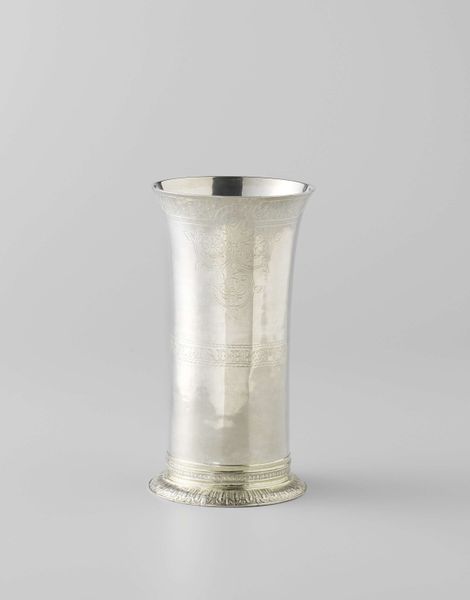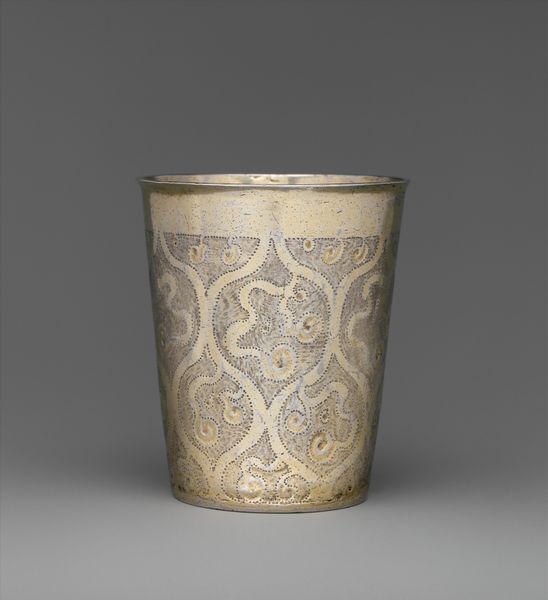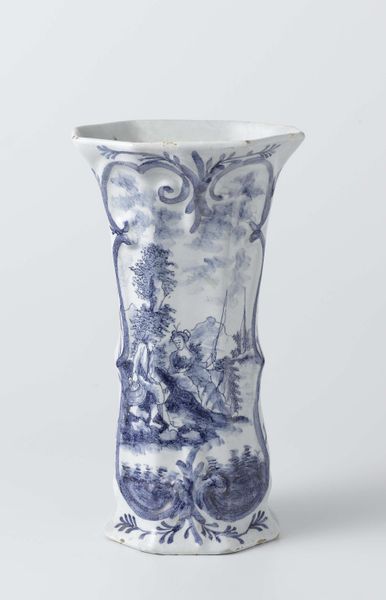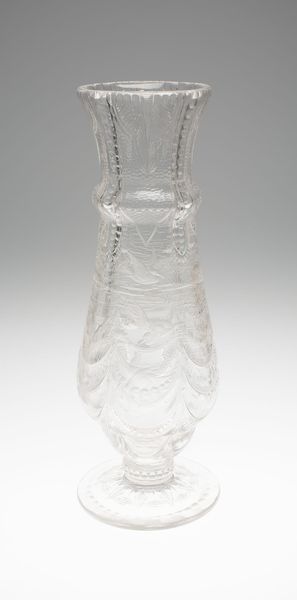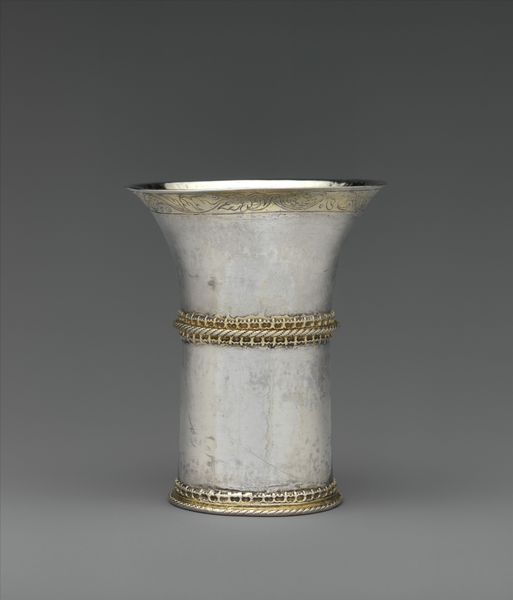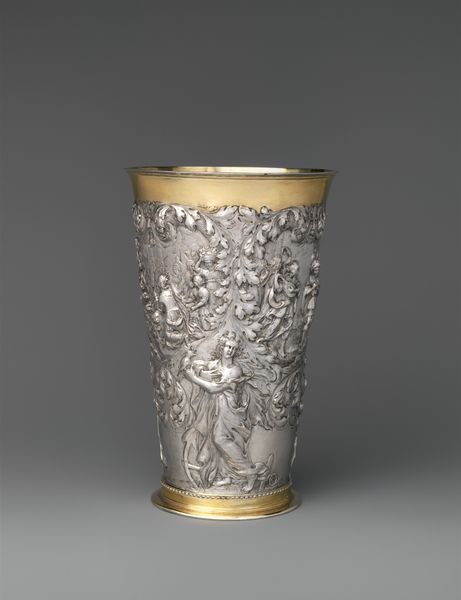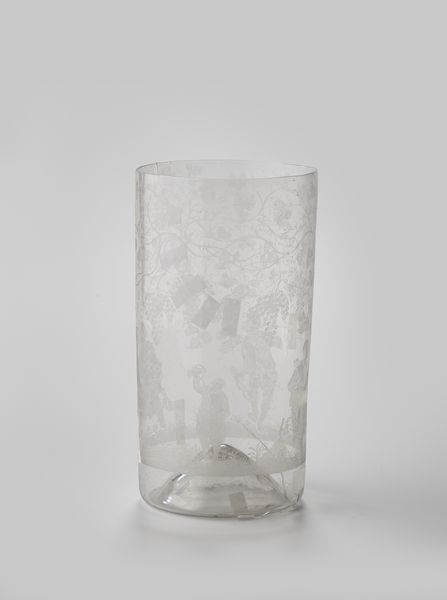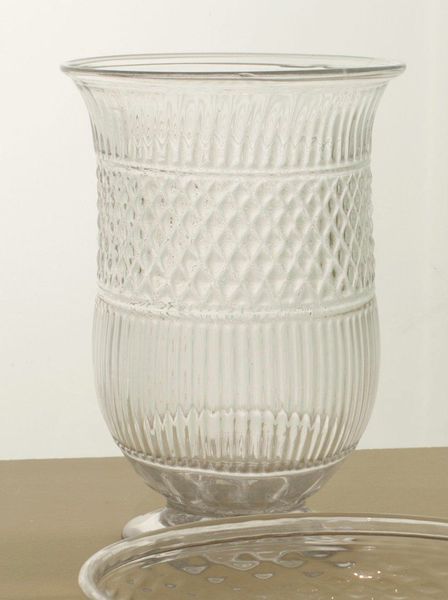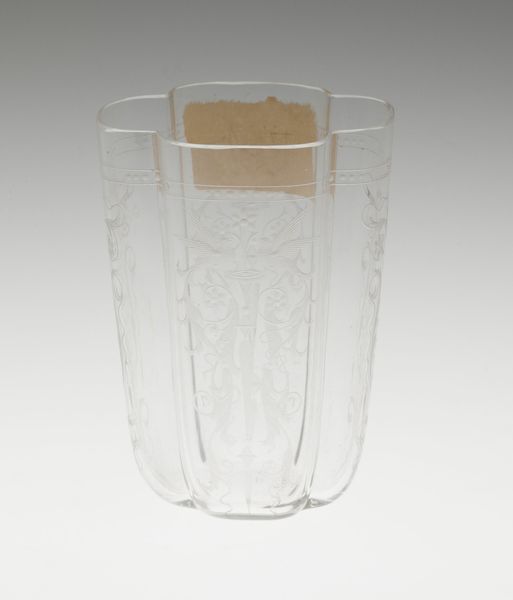
Beaker, with Dirk Scheij’s Journey from Cologne to Rees along the Rhine River 1628
0:00
0:00
etching, ceramic
#
dutch-golden-age
#
etching
#
ceramic
#
river
#
11_renaissance
#
stoneware
#
ceramic
Dimensions: height 24 cm, diameter 14 cm, diameter 10 cm, weight 739 gr
Copyright: Rijks Museum: Open Domain
This beaker, showing Dirk Scheij’s journey from Cologne to Rees along the Rhine River, was made in the early 17th century by Samuel Vercoigne. It is crafted from silver, a precious material that reflects the wealth of the patron who commissioned it. The surface is meticulously engraved with a detailed panorama of a river journey. Note how the silversmith used linear precision and the inherent qualities of the metal to capture geographical landmarks and scenes of daily life. Silver is not an easy material to work with; it requires specialized tools and skills. The engraver would have needed complete control, ensuring that each cut was precise. The high level of craftsmanship elevates this object beyond mere utility. It speaks to the cultural importance of silver as a medium for conveying status, telling stories, and commemorating events. The beaker blurs the lines between fine art and craft, showcasing the artistic potential inherent in functional objects. It shows the complex relationship between materials, making, and social context.
Comments
rijksmuseum about 2 years ago
⋮
At the end of December 1626, Dirk Scheij captures a Spanish paymaster in Cologne who is carrying the salaries for all of the Spanish soldiers stationed along the Rhine River. Scheij sails the river to Rees and delivers his loot to Frederick Henry. To record this feat for posterity he has the story of his journey engraved on this beaker. It ends at the bottom with the Dutch lion and an Orange tree in an enclosure: they defend the Republic.
Join the conversation
Join millions of artists and users on Artera today and experience the ultimate creative platform.
